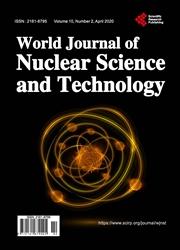Electrostatic Theory of Elementary Particles
引用次数: 1
Abstract
Theoretical physics makes a wide use of differential equations for which only a potential solution is applied. The possibility that these equations may have a non-potential solution is ruled out and not considered. In this paper an exact non-potential solution of the continuity equation is described. The electric field of an elementary charged particle consists of two components: the known Potential Component (PC) produced by the charge and the earlier unknown Non-potential Component (NC) with a zero charge. Charged particles have both components, while a neutron has only the NC. The proton and neutron NC ensures similarity of their properties. The PC is spherically symmetric and NC is axisymmetric. Therefore, to describe an elementary particle, one should take into account both its spatial coordinates and the NC orientation. The particle interaction is determined by their NC mutual orientation. Neglecting the latter leads to indefiniteness of the interaction result. In a homogeneous electric field, the force acting on the NC is zero. Therefore, a charged particle possessing the NC will behave like a potential one. In an inhomogeneous field, the situation is principally different. Due to the NC there occurs an interaction between a neutron and a proton. The non-potential field results in the existence of two types of neutrons: a neutron and an antineutron. A neutron repels from a proton ensuring scattering of neutrons on protons. An antineutron is attracted to a proton leading to its annihilation. The NC produces the magnetic dipole moment of an elementary particle.基本粒子静电理论
理论物理学广泛使用微分方程,而微分方程只应用了一个潜在的解。排除了这些方程可能具有非势解的可能性,并且没有考虑。本文给出了连续性方程的一个精确的非势解。基本带电粒子的电场由两个分量组成:由电荷产生的已知电势分量(PC)和先前未知的零电荷非电势分量(NC)。带电粒子有两种成分,而中子只有NC。质子和中子NC确保了它们的性质相似。PC是球对称的,NC是轴对称的。因此,要描述基本粒子,必须同时考虑其空间坐标和NC方向。粒子相互作用由它们的NC相互定向决定。忽略后者会导致交互结果的不确定性。在均匀电场中,作用在NC上的力为零。因此,具有NC的带电粒子将表现得像势能粒子。在不均匀的场中,情况基本上是不同的。由于NC,中子和质子之间会发生相互作用。非势场导致两种类型的中子的存在:中子和反中子。中子排斥质子,确保中子在质子上散射。反中子被质子吸引,导致其湮灭。NC产生基本粒子的磁偶极矩。
本文章由计算机程序翻译,如有差异,请以英文原文为准。
求助全文
约1分钟内获得全文
求助全文

 求助内容:
求助内容: 应助结果提醒方式:
应助结果提醒方式:


